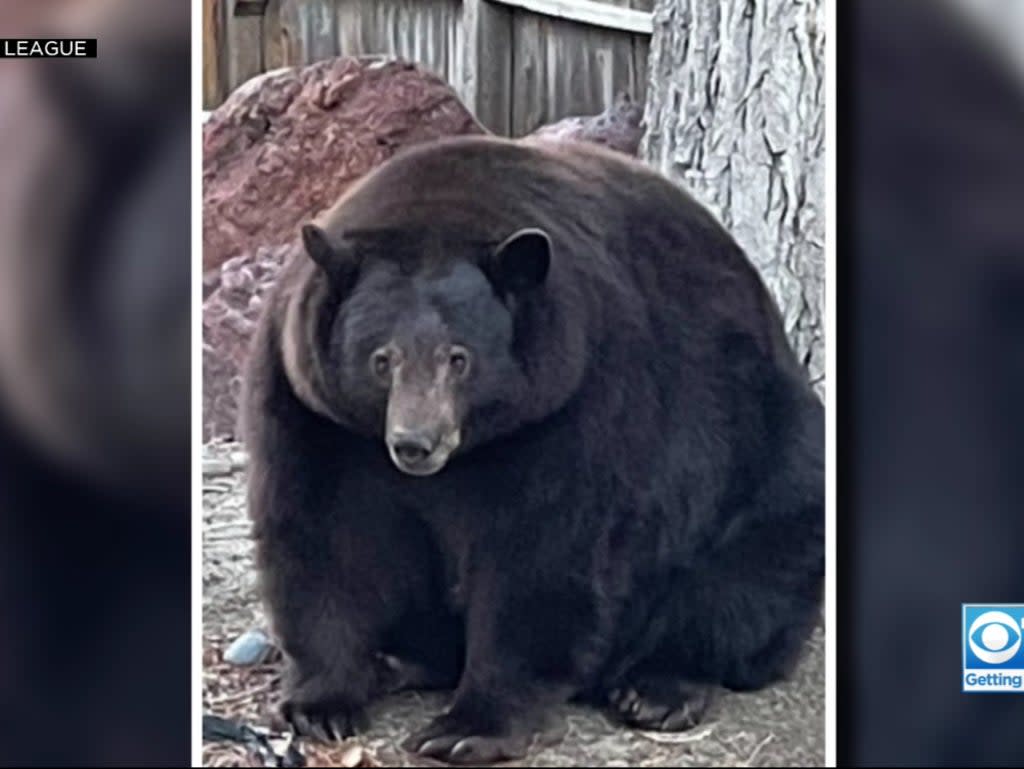500-pound black bear nicknamed ‘Hank the Tank’ wreaks havoc in California

A 500-pound black bear nicknamed ‘Hank the Tank’ has been wreaking havoc in California, breaking into homes and prompting at least 150 calls to authorities from worried locals.
Hank broke into his latest home on Friday in South Lake Tahoe, according to CBS Sacramento – and neither homeowners or wildlife officials seem entirely sure what to do about him.
“These are neighborhoods, there’s a lot of people around, traffic and cars. So, we have to do this in a way that is safe for both the public and the bear itself,” Peter Tira, a Department of Fish and Wildlife spokesman, told the station.
“This is a severely food habituated bear. What that means is this is a bear that has lost all fear of people and it sees people and homes as a source of food.”
On Friday, CBS reported, Hank broke “a small window and squeezed into the home, where the homeowners had no idea how to get him out.
“Officers responded and banged on the outside of the house until Hank came out the back door. They then stayed in the area to ensure he continued on his way without damaging or entering other homes.”
Hank, however, is not alone in his inadvertent terrorising of human populations. Climate-driven conditions across North America are impacting food sources for bears, experts told The Independent this summer – forcing them to venture further afield and into neighborhoods.
“Things like drought, that affects bear foods,” John Hechtel, president of the International Association for Bear Research and Management, said.
“It can affect berry production. It can affect returns of salmon to certain streams ... if the water temperatures get too hot or if there’s not enough water in the stream system to allow adequate salmon. There’s a lot of sort of interconnected relationships between climate, the habitat and potential food sources.”
He added: “It can be fairly indirect, like warmer temperatures that, in the winter time, allow beetle larvae to expand their range and to attack trees that produce food sources for bears. It can be fires that take out habitats.”
Climate and environmental impacts have knock-on effects for years, experts say. Bears can hibernate in dens for up to seven months of the year, and when they emerge, their primary focus is to build up fat reserves for the following winter. Only by maintaining nutrition can they reproduce, survive and thrive.
“Whenever there’s drought and it dries up the berries, you’ve got high mortality among cubs,” Minnesota biologist Dr Lynn Rogers, known as the “Jane Goodall of bears”, told The Independent.
“And females are unable to maintain their pregnancies, so the effects can last for years after prolonged drought.”
Disasters such as drought and fires have happened throughout history but are increasingly intense, more frequent and unpredictable due to the climate crisis – and will remain so for around the next 30 years, according to the latest UN climate report.
Beyond mid-century, these extreme events could become even more dire if humanity doesn’t rapidly reduce planet-heating greenhouse gas emissions.
In northern Minnesota, Dr Rogers studies black bears through the North American Bear Center, which he founded in 1995 – though the 82-year-old has been studying bears for more than half a century.
He has observed firsthand an increase in bears coming to town.
“Last year, we had a big drought that dried up the berries, and we got the same thing this year,” he told The Independent. “And I have never seen so many bears coming into local towns and going house to house for tidbits of garbage and birdseed.”
He added: “It used to be believed that, when bears come out of the forest into town, it was simply that they were lazy bears that had become habituated ... and food conditioned. But then from everything I saw, it was mainly just hunger.”

